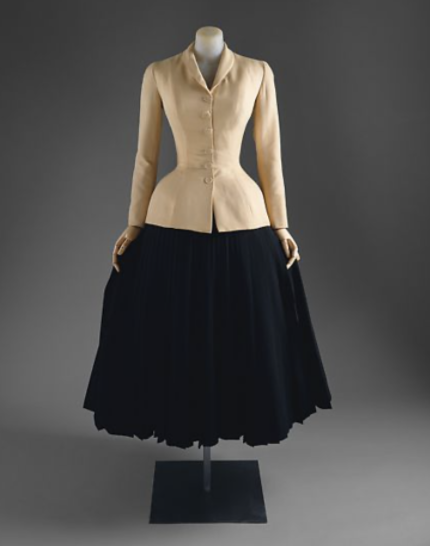“About Time” for a Fashion Throwback Exhibition
Graphic by Meher Yeda
Time froze for many people during the early stages of the pandemic. As strict social isolation measures and lockdowns permeated the globe, one could imagine that the world temporarily stopped.
With this in mind, Andrew Bolton, the current head curator of the MET’s Costume Institute, postponed the 2020 exhibition “About Time: Fashion and Duration” to late October. The exhibition was narrated by Hollywood figures including Meryl Streep, Nicole Kidman and Julianne Moore and designed as a tribute to the Metropolitan Museum of Art’s 150th Anniversary, but its meaning somehow changed. According to Bolton in an October 2020 Vogue article, “Now, because of what is happening, there is such a difference between objective time and your internal time, I never really thought about it until I completely experienced it. The time in your head is so out of sync with the time of the clock.”.
Image via WWD
This distinction between “objective time” and “internal time” is coincidentally seen in how the exhibition is displayed. Each room contains 60 garments. The first gallery hosts outfits ranging in origin from 1870 to the present day. According to the curators in the exhibition catalogue, it has a “Baudelairean” approach to curatorial choices: it shows how “fashion is inherently governed by novelty, ephemerality, and obsolescence.” The room’s design alludes to an abstract clock, with radial white lines on the floor leading to outfits along the walls.
Image via Fashionista
This rationality of the clock, an object of measurement, represents “objective time.” On the other hand, the second room features mirrors on every wall and ceiling, relating to “internal time” as the spectator contemplates their own reflection and interiority. This room is filled with “interruptions” in comparison to the first gallery since they relate to the first selection “in terms of shape, motif, material, technique, or decoration.” According to a Vogue Magazine review of the exhibition by Steff Yotka, these outfits do not “reflect the unity of a single shape the way Dior’s New Look, say, defined the fit-and-flare look of its era.”
When thinking about a linear timeline of fashion where clothes were part of a unified trend of influence, such as the Dior New Look from 1947, the French poet and art critic Charles Baudelaire’s writings on fashion are surprisingly relevant. According to Rémy Saisselin in the scholarly paper “From Baudelaire to Christian Dior: The Poetics of Fashion”, in Baudelaire’s essay “The Painter of Modern Life” from 1863, written almost a century prior to the Dior New Look, Baudelaire claims that pleasure and fashion are inseparable, writing, "What poet would dare, in the depiction of the pleasure caused by the apparition of a beauty, separate the woman from the dress?”. According to Rémy, Christian Dior similarly “called the New Look an art of pleasing.”
In a post-WWII context in France where women increasingly had to perform house duties, pleasure meant not only beauty, but comfort and flexibility too. This was a key concept for the New Look, which can be seen in Room 1’s Christian Dior 1947 “Bar” Suit, which has been reinterpreted several times since its creation. In contrast, behind the Dior ensemble stands one by the Japanese fashion designer Junya Watanabe. Her 2011 ensemble appropriates, in a contemporary way, the classic Dior “Bar” jacket with a “motorcycle” style — similarly to the New Look, it refers to the notion of mobility and women’s freedom.
Other iconic designers are also present in this exhibition, including Gabrielle Coco Chanel, Azzedine Alaïa, Gianni Versace, Nicolas Ghesquiere and others. Overall, by exclusively focusing the exhibition on haute couture pieces with the theme of time and timelessness, Bolton critiques, according to an October 2020 Vogue article by Steff Yotka, the accelerated rhythm of contemporary life and how such a fast pace affects “the production of fashion, the circulation of fashion, the consumption of fashion,” and concludes that the “haute couture look serves as a sign of hopefulness for ideas of sustainability, community, and togetherness to transform the fashion of the future.”
Though Bolton’s reference to haute couture can be read as elitist since only a small minority is able to afford such exclusive designer pieces, one can interpret the “About Time: Fashion and Duration” exhibition as referring to the concept of slow fashion. Supporting and buying from small local businesses is a viable way of taking out an important lesson of this exhibition regarding sustainability and an appreciation of the creative appropriation of icons of fashion history.





